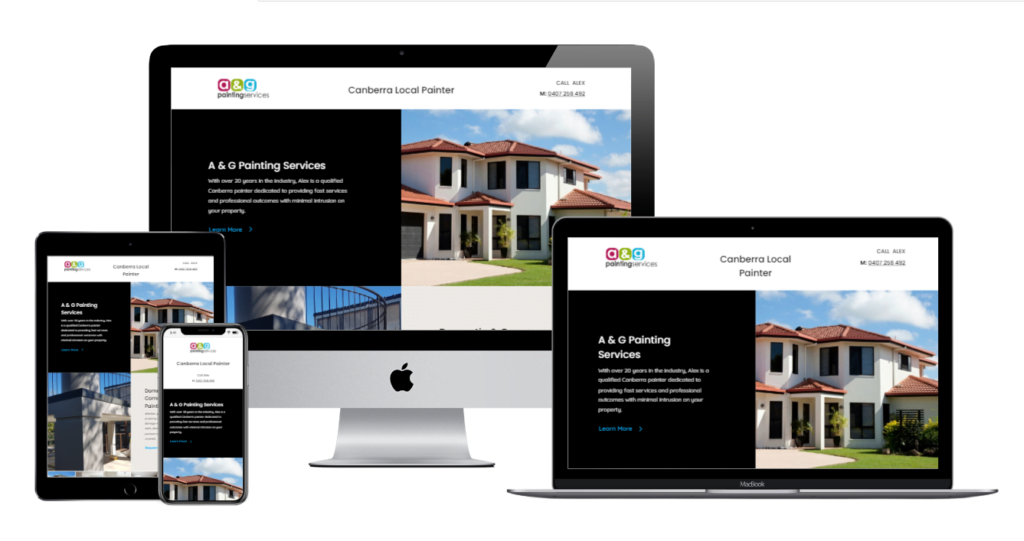How Your Website Is Designed To Get You More Clients
In today’s competitive business environment, having a pretty website is no longer enough. Your website should be effective to capture the attention of clients and guide them to take your desired action, whether it’s to fill out your web form, leave an email address, to make a sales call or a visit to your storefront.
Great Reasons To Get Good Web Design From The Start
- Done right, a website becomes a powerful marketing platform for your business to draw in your ideal client.
- The first impression is everything – your reputation matters, word of mouth gets around. Opinions and experiences are shared.
- To attract visitors
- Keep visitors engaged
- Help your online marketing
- To keep users on your website
- To rank higher on search engines
- To build up your business
- To build your brand for easy recognition and gain a loyal following
- Good web design is essential for every business
- Make your business credible by creating trust
The Anatomy of A Perfect Website
- User Flow – intuitive design takes site visitors on a journey of discovery towards taking action.
- Design and Layout – always design a website for user experience. The layout and use of brand design is an integral part of web design. The web pages have to work on mobile phone, tablet, laptop and desktop pc. This is called, “responsive design.’
- Navigation – easy to find web pages within the website.
- Content – avoid clutter of too much text and create a relevant web copy that sells and use high-resolution images that are sized correctly. May also have to be created to line up with compliance in your profession.
- SEO – Search Engine Optimised websites are discoverable online by showing up on Search Engine Result Pages (SERPs). Add meta descriptions, featured images, alt tags, keywords, social media SEO and your excerpt. If your website is difficult for others to find online, your business will struggle.
- Analytics – Statistics provide insight into what works and what doesn’t. You also get to see where your leads are coming from and the data can be used to improve your business.
- Contact – your contact information such as phone number and contact must be easy to find. Web forms must be quick and easy to fill out. Avoid creating long drawn out forms, unless they are for the purpose of registration.
- Social Media – Integrate your social media for follows and add share buttons.
- Transparency – terms of use, privacy policy, other policies, expectations and pricing may be added.
- Testimonials – these are really great to add onto a website for credibility. What others have to say about your services is powerful.
- Links – use internal and external links.
- Ratings and Reviews – From your Google Business Profile or from Facebook. Ratings and reviews carry clout in the business world. If you haven’t already done so, consider creating a Google Business Profile.
- Calls to Action – having clear call to actions that compel your site visitors to buying can mean the difference between getting the sale or losing a client.
Image: A look at a responsive layout – ACT Websites.
Aspects That Make A Website Designed For User Experience
- Useful – designed for function and purpose making it relevant to you and to the client.
- Useable – designed to achieve objectives effectively and efficiently
- Findable – designed with web pages that are easy to navigate, and with products and services that are easy to find. A website also needs to be discoverable on the search engine.
- Credible – designed to build trust due to web content, layout, branding, design, function, products and services.
- Desirable – designed for users to connect emotionally with identity, branding, aesthetics, images, products and services.
- Accessible – designed for the easy access of users with different abilities
- Valuable – designed to deliver value to the business owner who buys it and for the site visitor who uses it.
Improve Your Online Presence
In conclusion, for small business owners looking to improve their online presence, there are several ways to do it. Your website needs to fit your brand. But, if it’s difficult for others to find you on Google, your business will struggle, they won’t book that appointment, buy that product or hire you. Importantly, make sure your website is responsive so that it can be seen on any mobile device. Get reviews and ranking on Google.
You Don’t Have A Website?
Website design is something that every business owner should think of. If you don’t have one, consider competing online to increase your customer base in order to grow your business. Contact Sandra for a quote. I dig deep to get to know you and your business goals by asking questions. The answers you provide enable me to strategies for creating the website of your dreams that will bring in clients.


